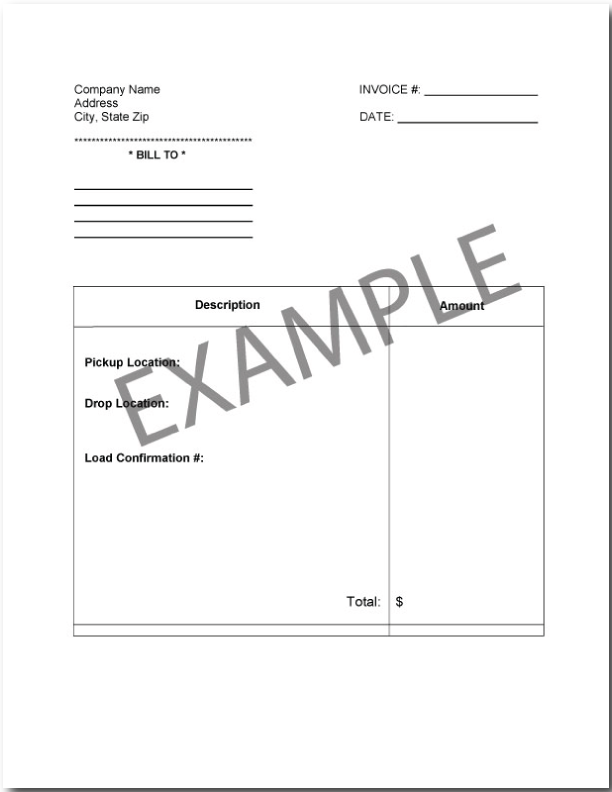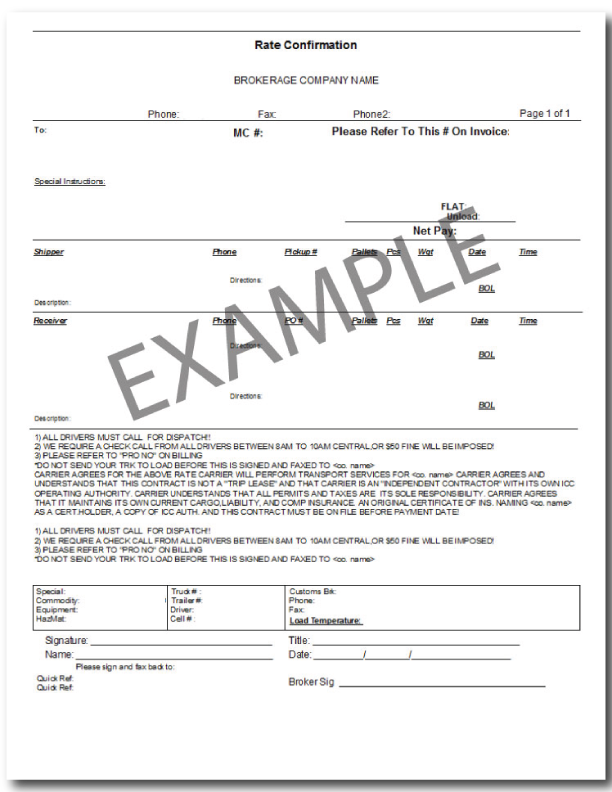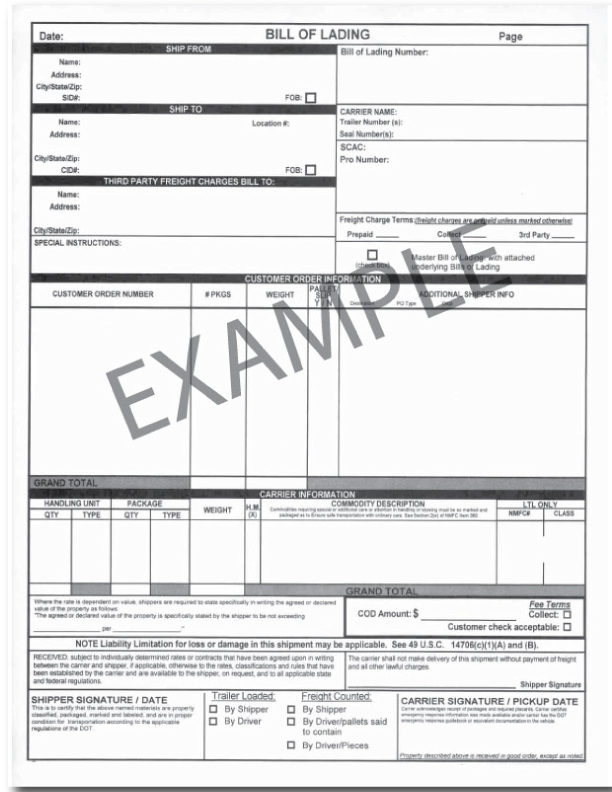Most trucking company owners start out with one truck and a dream. They’ve spent their years in the trucking industry driving a truck and are over-the-road hauling experts. However, operating your own business is a completely different challenge and requires some entrepreneurial knowledge. Luckily, it’s pretty easy to learn business basics such as how to bill your customers.
Running a successful trucking business is, at its core level, getting paid for goods and services provided. That’s common knowledge. But we’ve found that most trucking company owners don’t know what an invoice is or the best way to bill their customers when they’re just starting out. We’ve learned some helpful tactics and best practices over our two decades of looking at our clients’ freight bills. We’re going to share them with you so that you can start building your freight bills like a pro.



Freight Bill Invoicing 101
Billing your customers requires very few documents, so it’s not a science. Your customers might have their own preferences, but in general, if you’re sending your freight bills over to a broker you’ll need three things – an invoice page, a rate confirmation sheet, and a Bill of Lading (BOL). If you’re billing a shipper for a direct shipment, you’ll need the invoice page and Bill of Lading. Wondering what a Bill of Lading is? Let us explain.
Invoice – an invoice is just another way of saying bill or freight bill. Freight invoices list the amount being billed from a carrier for the service provided. An invoice could include multiple pages of documents required by the customer’s accounts payable department.
Invoice Page – like a cover page, an invoice page includes the dollar amount owed along with any other additional charges itemized. It’s also a good practice to include the name of the carrier and the customer being billed. An invoice page is created by you. If you need help creating an invoice page, download our FREE freight invoice template to get started.
Rate Confirmation Sheet – a load confirmation is an agreement between a carrier and a broker that includes all information pertinent to the load, including billing instructions and the agreed-upon rate of the shipment to be delivered. The rate confirmation is provided by the brokerage agent and is also called a rate sheet or rate con, for short.
Get a Free Freight Invoice Template Here
Bill of Lading – BOL, for short, is essentially a receipt of cargo that passes the responsibility of the cargo to the carrier while it’s in transit. A BOL is often used as the proof of delivery (POD) and signed by the receiver when the load is delivered. The Bill of Lading is often provided by the broker, the shipper, or the pick-up location of a load. A BOL should include the origin and destination, the shipper’s name and address, and the receiver’s name and address.
Freight Bill Best Practices
As we mentioned above, not all brokers or shippers are going to require the same things, so it’s a good idea to double check every freight bill before it gets sent to your customers’ accounts payable (AP) department. Putting these accounts payable best practices to good use will help put money in your pockets quickly.
Include all required documentation – if you paid for a lumper, have weight or gate tickets, paid tolls, or experienced other accessorial charges, it’s a good idea to include those receipts along with your invoice whenever possible. If you can, get an updated rate confirmation sheet if you take an advance or are going to be reimbursed for detention. Having the same billing amount on your invoice page and rate sheet will help you receive payments quickly.
Check The BOL – Make sure that the BOL/POD is signed when the load is delivered. Check to see if the receiver left any notes on the BOL in addition to their signature. Look for the words “late,” “damaged,” or “shortage” as they might impact your payment. If you see notes listed you can contact your brokerage agent to work through a potential resolution right away, rather than waiting for 30, 60, or even 90 days when the accounts payable department starts to initiate payment.
Match, Match, Match – it’s like the three most important rules in real estate – location, location, location. Match your invoice page to the rate sheet and match the rate sheet to the BOL.
- Match the origin and destination of the load to see if they’re the same on the rate sheet and BOL.
- Check the rate confirmation sheet to see if the carrier listed matches your trucking company name with no errors or misspellings
- Check the rate confirmation to make sure it matches the broker you booked the load from
- Match the billing dollar amount on the invoice page to the rate sheet
- Check the rate confirmation for a signature that matches yours or an employee
Back-Office Support Benefits
That’s a lot of information and work, we know! That’s why having back-office support is so helpful. Apex provides these freight bill checks and balances for you, by experts who are trained to look for anything that doesn’t add up. We even do the collections for you, because we want to make sure you don’t work for free. In fact, we can get your freight bills paid the same day you deliver.
You delivered the load, sent in your professionally perfected freight bill, and then you wait to get paid. How long is too long to wait to get paid? Let us show you the Apex difference. Call us at 855-369-2739 or get started here.
